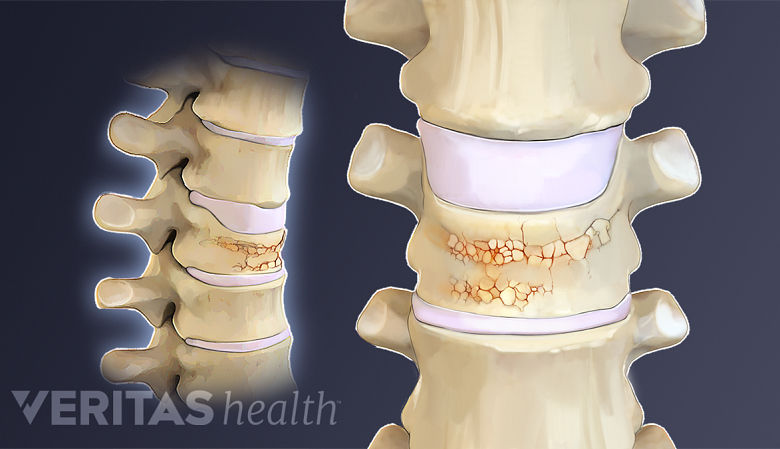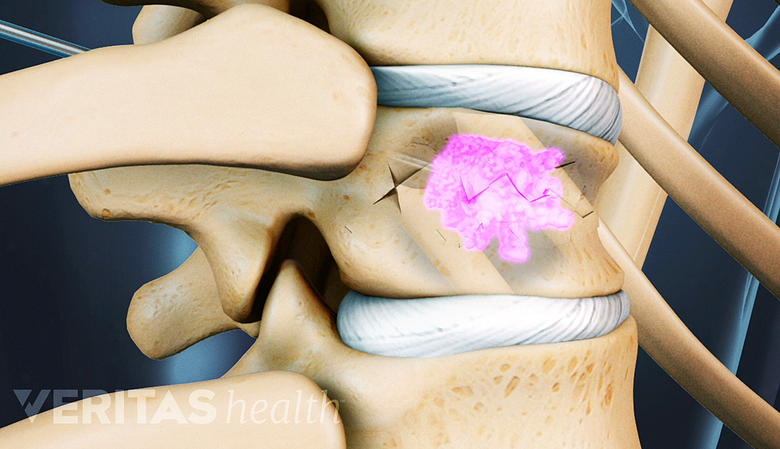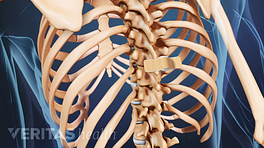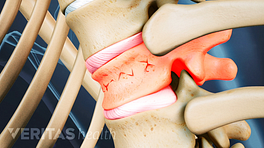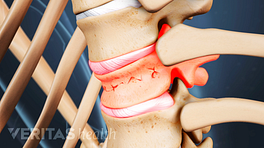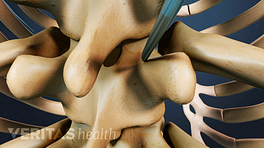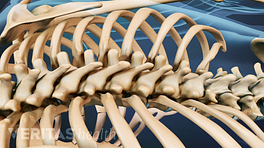There are two common general approaches to vertebral augmentation, a category of minimally invasive surgical procedures designed to immediately stabilize a vertebral fracture to treat the patient's pain and prevent progressive spinal deformity.
In This Article:
Vertebral Fracture Surgery
Vertebroplasty and kyphoplasty provide pain relief from compression fractures.
To provide relief of the pain of a vertebral fracture and prevent further collapse, two types of minimally invasive procedures are available.
These procedures, vertebroplasty and kyphoplasty, are most commonly used in cases of severe, functionally disabling pain caused by a vertebral fracture that does not improve over a number of weeks with pain medication and treatment with brace immobilization.
Read more: Vertebroplasty After a Painful Spine Fracture and Kyphoplasty for Vertebral Compression Fractures
Both vertebroplasty and kyphoplasty procedures involve the placement of cement into the fractured vertebra through small, minimally invasive incisions in the skin under X-ray guidance using fluoroscopy.
Kyphoplasty
Kyphoplasty is so named because it often involves the attempt to directly reduce the kyphosis that results from vertebral body collapse.
In kyphoplasty, a surgical device or instruments are placed into the broken vertebra and used to reduce the vertebral body collapse towards its original shape. The central void created after removal of the surgical device or instruments is then filled with stabilizing material, leaving the material in place to stabilize the fracture in the improved vertebral shape.
Vertebroplasty
Vertebroplasty involves the injection of low-viscosity bone cement into the fractured vertebrae.
This vertebral augmentation procedure may involve either no manipulation or only external reduction of the fracture by extension, i.e., physical manipulation of the patient when placing the patient on the operating table before the material is injected into the fracture site.
Additional approaches to vertebral augmentation are now available, but vertebroplasty and balloon kyphoplasty are two common procedures and many of the relevant considerations apply to other forms of vertebral augmentation as well.
Both vertebroplasty and kyphoplasty are successful about 90% of the time in significantly relieving the pain of fractured vertebrae. Kyphoplasty procedures are considered to be potentially more helpful in correcting vertebral collapse and wedging if it is done within six weeks of when the fracture is sustained.
This article provides a review and comparison of vertebroplasty and balloon kyphoplasty and an overview of potential risks and complications.

